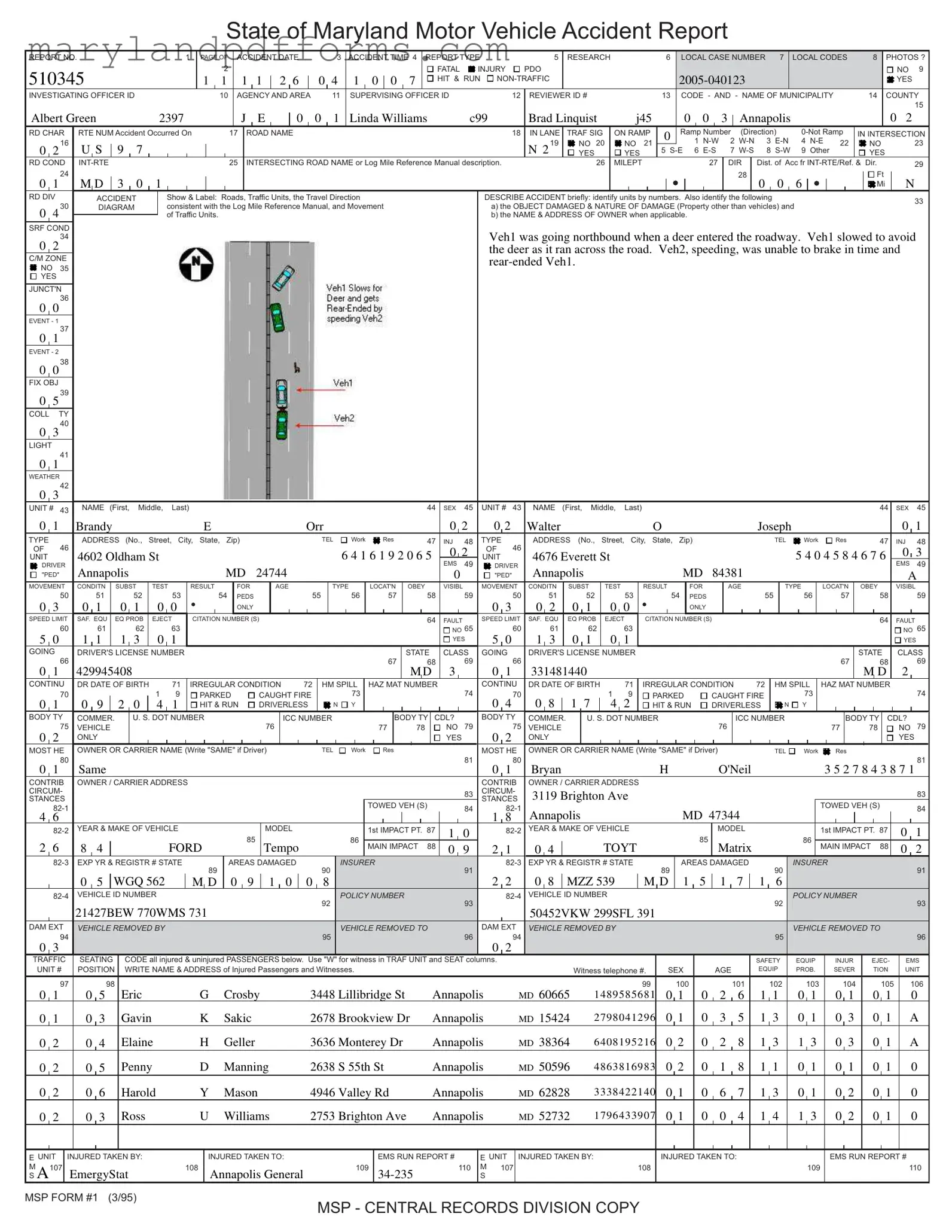The Maryland Motor Vehicle Accident Report form is designed to document the details of motor vehicle accidents that occur within the state. This form collects essential information such as the date and time of the accident, the parties involved, the nature of the injuries, and any damages to vehicles or property. It serves as an official record that can be used for insurance claims, legal proceedings, and statistical analysis by state agencies. Completing this form accurately helps ensure that all necessary information is available for investigations and future reference.
Typically, the form must be completed by the investigating officer at the scene of the accident. However, if no officer is present, drivers involved in the accident may need to fill it out themselves. This includes any individuals who were involved in the accident, whether they were drivers, passengers, or witnesses. It is crucial for all parties to provide accurate and complete information to facilitate the claims process and any potential legal actions.
Individuals can obtain the Maryland Motor Vehicle Accident Report form from various sources. It is available online through the Maryland State Police or the Maryland Department of Transportation websites. Additionally, copies can be requested at local police departments or the county clerk's office. If you were involved in an accident, you may also receive a copy from the investigating officer at the scene. Ensure that you have all necessary details, such as the report number or the date of the accident, when making your request.
If you find an error on the Maryland Motor Vehicle Accident Report form, it is important to address it promptly. Contact the agency that issued the report, typically the police department, and inform them of the inaccuracies. You may need to provide documentation or evidence to support your claim. Corrections can often be made through an amendment process, ensuring that the official record reflects the correct information. This is vital for insurance purposes and any legal matters that may arise from the accident.
